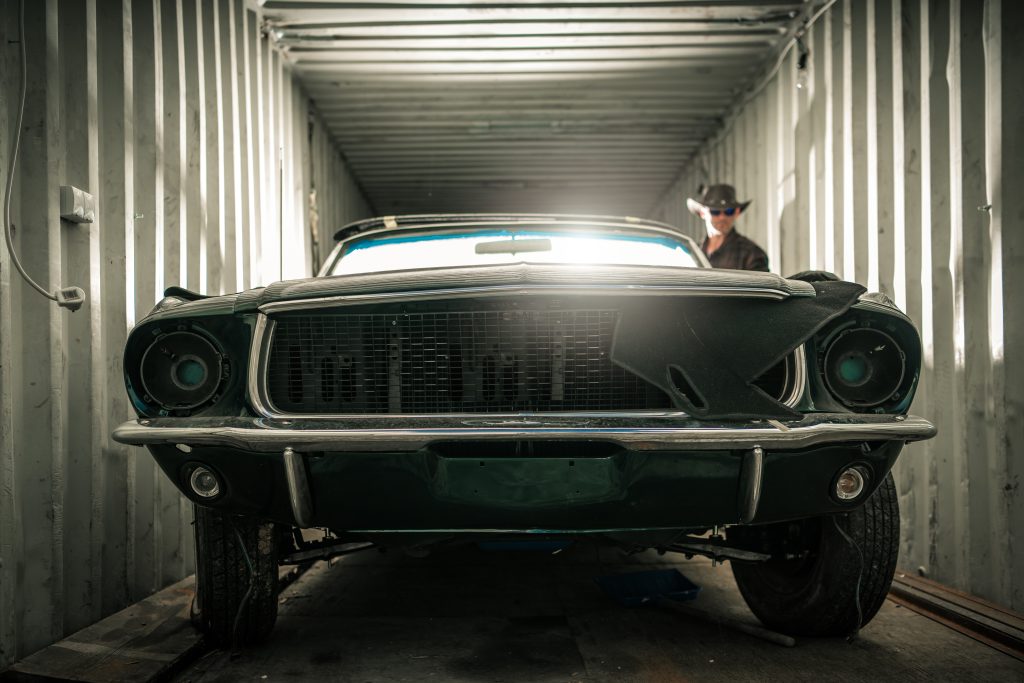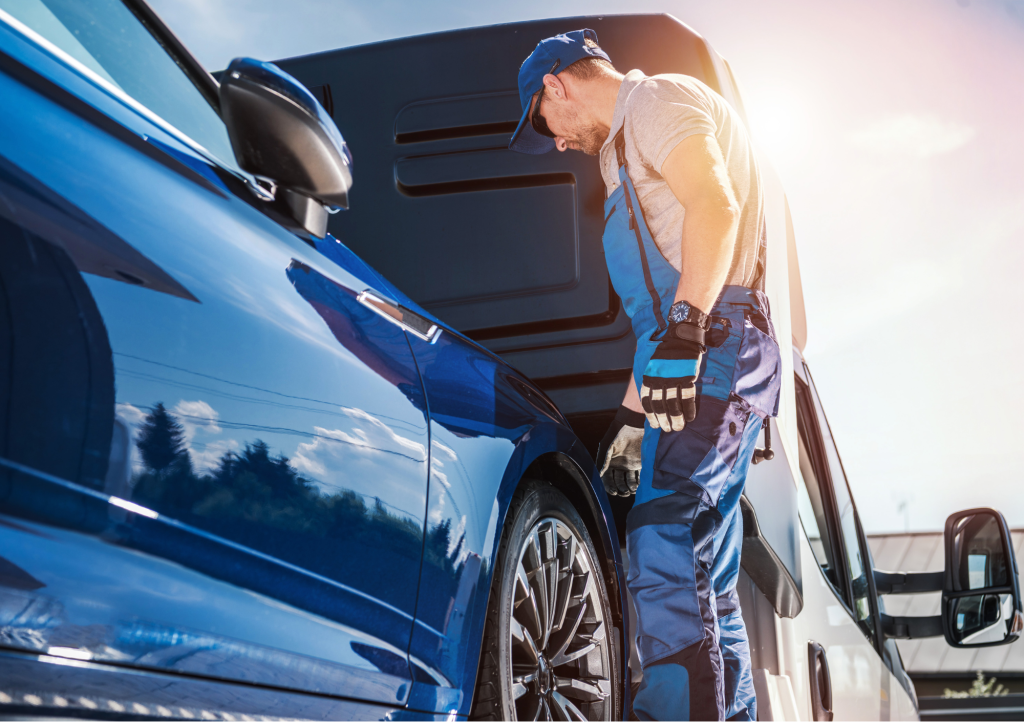
The Unique Challenges of Classic Car Shipping
When it comes to transporting a cherished classic, vintage, or antique vehicle, the stakes are considerably higher than shipping a standard vehicle. Classic cars aren’t just transportation, they’re investments, pieces of history, and often the culmination of years of passion and restoration work. Their irreplaceable nature demands specialized handling and exceptional care throughout the car shipping process.
Whether you’ve just acquired a dream car from an out-of-state auction, need to transport your vintage collection to a car show, or are relocating your classic to a new home, understanding the nuances of classic car shipping is essential for peace of mind.
This comprehensive guide walks you through every step of the classic car shipping process, highlighting the special considerations that make transporting these automotive treasures different from standard auto transport.
Table of Contents
|
Why Classic Car Shipping Differs from Standard Auto Transport
Classic car shipping involves several unique factors that distinguish it from regular vehicle transport:
Value Considerations
- Higher Financial Value: Many classics represent significant investments, often worth six or seven figures
- Irreplaceable Historical Significance: Damage to rare models can be impossible to properly repair
- Appreciation Potential: Unlike modern cars, classics often increase in value over time
Technical Challenges
- Fragile Components: Vintage parts may be more susceptible to damage during transport
- Mechanical Sensitivities: Older systems have different tolerances for movement and vibration
- Special Loading Requirements: Lower ground clearance, wider bodies, or unusual dimensions
Insurance Complexities
- Agreed Value Coverage: Standard car shipping insurance often inadequate for classics
- Documentation Requirements: More extensive condition reporting needed
- Special Valuation Processes: Appraisals often required for proper coverage
Preparation: Getting Your Classic Ready for Transport
Proper preparation is crucial for ensuring your classic arrives in the same condition it left:
1. Document Current Condition
- Take detailed, high-resolution photos of your vehicle from all angles
- Capture close-ups of any existing damage, blemishes, or restoration work
- Record videos showing the car’s current state, focusing on vulnerable areas
- Consider a pre-transport inspection by a professional appraiser
2. Mechanical Preparations
- Address any fluid leaks (carriers will often reject leaking vehicles)
- Ensure battery is secure and properly connected (or disconnected if preferred)
- Check tire pressure (slightly under-inflated tires may be preferred for transport)
- Secure or remove any loose or fragile components
3. Exterior Preparations
- Remove or secure custom accessories, antennas, and detachable parts
- Consider applying protective film to vulnerable areas (chrome, headlights)
- Remove valuable emblems or badges if they’re easily detachable
- Clean the car thoroughly to make pre-existing conditions clearly visible
4. Interior Preparations
- Remove all personal items and loose objects
- Secure or remove rare or valuable accessories
- Document the condition of interior components
- Ensure windows are securely closed and convertible tops properly fastened
Choosing the Right Transport Method

For classic cars, the method of transport is perhaps the most critical decision in the entire process:
Enclosed Transport (Recommended)
- Hard-Sided Trailers: Provide complete protection from weather, road debris, and prying eyes
- Soft-Sided Enclosed: Offer weather protection with slightly lower cost than hard-sided options
- Air-Ride Suspension: Reduces vibration and impact during transit
- Lift Gates: Allows for gentle, level loading without driving the vehicle
- Climate Control: Available for extremely valuable or sensitive classics
- Hydraulic Lifts: Ideal for vehicles with extremely low ground clearance
Open Transport Considerations
- Single-Car Open Carriers: Provide dedicated service but limited protection
- Multi-Car Open Carriers: Most economical but least protection (rarely recommended for classics)
- Weather Exposure: Risk of damage from rain, snow, sun, and road debris
- Security Concerns: Vehicle remains visible during transport and stops
Door-to-Door vs. Terminal Service
- Door-to-Door: Minimizes handling and transfers, but requires accessible locations
- Terminal-to-Terminal: May require additional driving, but sometimes necessary for remote locations
- Combined Services: Partial door-to-door options for challenging locations
Specialized Transport Options
- Single-Car Enclosed Transport: Maximum protection and individual attention
- Limited-Load High-Value Services: Carriers specializing exclusively in classics and exotics
- Specialty Equipment: Unique loading systems for extremely low or valuable vehicles
For most classic car owners, hard-sided enclosed transport with air-ride suspension is the gold standard, providing the best combination of protection and peace of mind.
Finding a Qualified Classic Car Transporter
Not all auto transport companies are equipped to handle classic cars. Here’s how to identify qualified transporters:
Essential Qualifications
- Experience with Classics: Verified history of classic car transport
- Specialized Equipment: Enclosed trailers with appropriate loading systems
- Proper Insurance: High-value coverage specifically for classic and collector vehicles
- Industry Affiliations: Memberships in classic car organizations or transport associations
- Verifiable Reviews: Feedback from other classic car owners and collectors
Red Flags to Avoid
- Companies with minimal or no experience with classic vehicles
- Transporters unwilling to provide adequate insurance documentation
- Unusually low quotes compared to market rates for enclosed transport
- Lack of specialized knowledge about classic car handling
- Poor communication or vague responses to specific questions
Key Questions to Ask Potential Transporters
- “What percentage of your business involves classic or collector vehicles?”
- “What specific equipment do you use for loading classic cars?”
- “Can you provide references from other classic car clients?”
- “What insurance coverage do you offer for high-value vehicles?”
- “How do your drivers receive training for handling classics?”
Documentation and Insurance for Valuable Classics
Proper documentation is particularly crucial when shipping vehicles of significant value:
Essential Documentation
- Detailed Bill of Lading: Serves as the transport contract and condition report
- Insurance Certificate: Proof of carrier’s cargo insurance with coverage limits
- Supplemental Insurance: Additional coverage for extremely valuable vehicles
- Pre-Transport Condition Report: Detailed documentation of vehicle condition
- Valuation Statement: Agreed value declaration for insurance purposes
- Transportation Order: Outlines all services, costs, and special instructions
Insurance Considerations
- Standard Carrier Insurance: Typically has limitations that may not fully cover classics
- Valuation Approaches: Agreed value vs. stated value vs. actual cash value
- Coverage Limits: Ensure policy limits exceed the vehicle’s full value
- Deductibles: Understand what you’re responsible for in case of damage
- Claims Process: Know the procedure before you need it
The Booking Process: Timeline and Considerations
For classic car shipping, the booking process requires more advance planning and attention to detail:
Recommended Timeline
- 4-6 Weeks Before: Begin researching and vetting transport companies
- 3-4 Weeks Before: Select carrier and book transport
- 2-3 Weeks Before: Finalize all documentation and insurance
- 1-2 Weeks Before: Prepare vehicle according to carrier specifications
- 1 Week Before: Confirm all details and schedule precise pickup time
Key Booking Details to Specify
- Vehicle’s exact dimensions, weight, and ground clearance
- Any special loading requirements or concerns
- Complete pickup and delivery addresses with access information
- Preferred transport method (specific trailer type)
- Any mechanical issues the driver should be aware of
- Preferred communication method during transit
Questions to Ask During Booking
- “Will the same driver handle the vehicle from pickup to delivery?”
- “What happens if there are unexpected delays?”
- “How will my vehicle be positioned on the trailer?”
- “Will my vehicle be driven at any point during the process?”
- “What specific measures will be taken to secure my classic?”
Pickup Day: What to Expect

The pickup process for a classic car requires careful attention and documentation:
Before the Carrier Arrives
- Ensure the vehicle is clean and ready for inspection
- Have all documentation organized and accessible
- Clear a path for the transport truck to access the vehicle
- Make sure someone knowledgeable about the vehicle will be present
During the Inspection Process
- Walk around the vehicle with the driver, noting any existing conditions
- Point out any special concerns or handling requirements
- Verify all noted conditions are properly documented on the Bill of Lading
- Take your own photos with the transport vehicle in frame as proof of pickup
- Discuss any last-minute questions or special instructions
Loading Procedures
- Observe how the vehicle is loaded onto the transport
- Ensure proper strapping and securing methods are used
- Verify the car is positioned appropriately on the trailer
- Confirm that any special instructions are being followed
During Transit: Tracking and Communication
While your classic is in transit, staying informed is critical:
Tracking Options
- GPS Tracking: Many premium transporters offer real-time location updates
- Regular Check-ins: Scheduled updates from the transport company
- Driver Communication: Direct contact with the driver when appropriate
- Transport Management System: Online portals for status updates
Communication Protocols
- Establish preferred communication methods and frequency before transport
- Have emergency contact information for the driver and dispatch
- Understand the chain of command if issues arise
- Receive notifications for key milestones (departure, state crossings, estimated arrival)
Potential Transit Issues
- Weather delays and routing changes
- Mechanical issues with the transport vehicle
- Schedule adjustments due to other deliveries
- Regulatory and inspection stops
Delivery and Inspection: The Critical Final Step
When your classic car arrives at its destination, thorough inspection is essential:
Delivery Process
- Be present or have a trusted representative available
- Schedule enough time for proper inspection (30-60 minutes)
- Have good lighting available if delivery occurs at night
- Be prepared to document any concerns immediately
Inspection Procedures
- Compare the vehicle against pre-transport documentation
- Check for any new damage or changes in condition
- Test mechanical functions if appropriate
- Inspect vulnerable areas particularly carefully:
-
- Paint and exterior finish
- Chrome and brightwork
- Glass and lighting
- Undercarriage components
- Interior condition
Documentation Completion
- Note any discrepancies on the Bill of Lading before signing
- Take detailed “after” photos for your records
- Get copies of all signed delivery documents
- Confirm the process for any potential claims if needed
Cost Factors in Classic Car Shipping
Classic car shipping typically costs more than standard auto transport due to the specialized handling required:
Average Cost Ranges
- Open Transport: $1.50-$2.50 per mile for shorter distances, $0.75-$1.25 per mile for longer routes
- Enclosed Transport: $2.50-$3.50 per mile for shorter distances, $1.25-$2.00 per mile for longer routes
- Premium Enclosed Services: $3.50-$5.00+ per mile depending on vehicle value and requirements
It’s important to note that these are just averages, and the actual cost will vary based on several factors.
Factors Affecting Price
- Distance: Longer distances have lower per-mile rates but higher total costs
- Vehicle Value: Higher-value classics often require premium services
- Vehicle Dimensions: Oversized classics may incur additional charges
- Route Popularity: Remote locations or unusual routes cost more
- Seasonal Factors: Demand fluctuations throughout the year
- Insurance Requirements: Additional coverage for extremely valuable vehicles
- Urgency: Expedited shipping commands premium prices
- Special Requirements: Unusual loading needs or handling instructions
Sample Costs for Popular Classic Car Routes
- Los Angeles to Phoenix: $800-$1,200 (enclosed)
- Chicago to Miami: $1,500-$2,200 (enclosed)
- New York to Los Angeles: $2,000-$3,000 (enclosed)
- Detroit to Scottsdale (auction season): $1,400-$2,000 (enclosed)
Seasonal Considerations for Vintage Car Transport
Different seasons present unique challenges and opportunities for classic car shipping:
Summer Considerations
- Advantages: Good road conditions, more daylight hours
- Challenges: Higher demand, potential for extreme heat affecting vehicles
- Pricing: Often peak season with premium rates
- Planning Tips: Book far in advance, consider climate-controlled transport for valuable vehicles
Winter Considerations
- Advantages: Lower demand on many routes, potential for better rates
- Challenges: Weather delays, road salt concerns
- Routes to Avoid: Northern routes with snow and ice potential
- Best Winter Routes: Southern corridors remain reliable year-round
Car Show and Auction Season
- Peak Periods: January (Arizona auctions), March (Amelia Island), August (Monterey)
- Planning Needs: Book 2-3 months in advance for major events
- Pricing Impact: Expect 10-20% premiums during major collector car events
- Alternative Strategies: Consider shipping before or after peak weeks
FAQs: Classic Car Shipping
How far in advance should I book classic car shipping?
For standard service, book 3-4 weeks in advance. For transport during auction season or to popular collector car events, book 2-3 months ahead.
Is my classic car covered by the carrier’s insurance?
Carriers provide basic insurance, but you should verify coverage limits and consider supplemental insurance for high-value classics. Always get a certificate of insurance before shipping.
Can I put personal items in my classic during transport?
No. Department of Transportation regulations prohibit carriers from transporting personal items. Additionally, items inside the vehicle could shift and cause damage.
How do I ship a non-running classic car?
Non-running vehicles require special equipment for loading and unloading. Inform your transport company in advance, as this typically incurs additional charges and requires carriers with winches or forklifts.
Should I empty the gas tank before shipping?
No, but the tank should be only 1/4 full—enough to move the vehicle on and off the trailer but not so much as to add unnecessary weight.
Will the transport company drive my classic car?
Minimally. The car will be driven during loading and unloading, but only for short distances. If this is a concern, discuss “no-drive” options that use winches instead.
What’s the difference between hard-sided and soft-sided enclosed transport?
Hard-sided enclosed trailers provide complete protection from elements and visibility, while soft-sided enclosed trailers use heavy-duty fabric sides that protect from weather but offer less security and protection from impacts.
How do I prepare a classic convertible for shipping?
Secure the top in the closed position, preferably with the manual weather protection cover in place. If the top is fragile or valuable, discuss additional protective measures with your carrier.
Ensuring a Smooth Classic Car Shipping Experience
Transporting a classic car requires more attention to detail than standard auto transport, but with proper planning and the right transport partner, it can be a worry-free experience. Remember these key points:
- Always choose enclosed transport for valuable classics
- Document everything before and after transport
- Verify insurance coverage is adequate for your vehicle’s value
- Plan well in advance, especially during peak seasons
- Work with specialists who understand classic car needs
Direct Connect Auto Transport specializes in premium classic car shipping services nationwide, with a focus on white-glove service for collector vehicles. Our enclosed transport options, experienced drivers, and comprehensive insurance make us the preferred choice for classic car enthusiasts.

